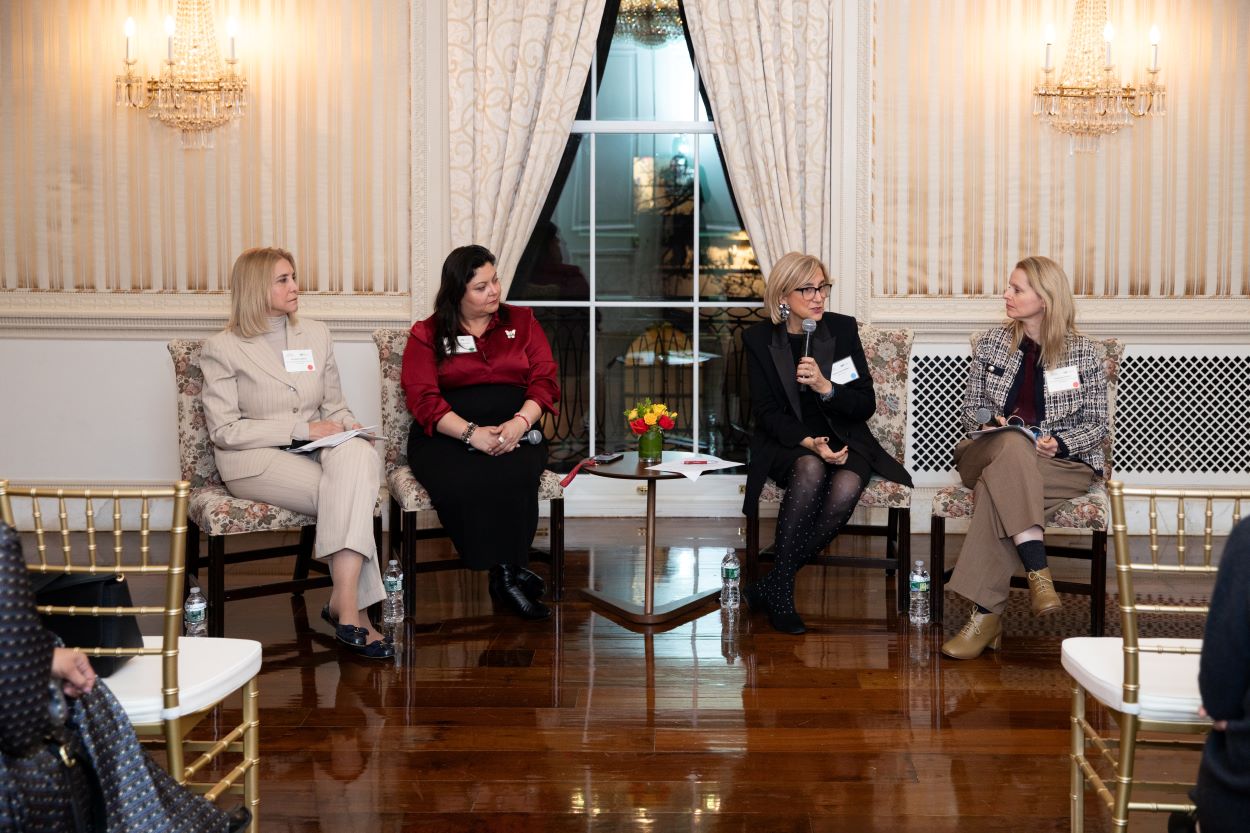Summary: Conflict Resolution in Guatemala
Summary: Conflict Resolution in Guatemala
Indigenous leaders shared their experiences in using centuries-old strategies to mediate conflicts ranging from land disputes to family arguments.
Speakers:
- Alberto Chumil, indigenous leader from Solola
- Alberto Marroquin, indigenous mayor of Pocomam
- Christopher Sabatini, Editor-in-Chief, Americas Quarterly and Senior Director of Policy, Americas Society/Council of the Americas (Moderator)
Summary
On January 22, AS/COA hosted a public discussion with a delegation from Guatemala’s Ancestral Mayan Authorities on conflict resolution and community relations. In a country with concerns about violence and rule of law, Mayan authorities advocate for the use of centuries-old traditions to resolve conflict, establish social peace, and strengthen the social fabric of their communities. For these leaders, solutions to Guatemala’s violence should not come from state policies alone, but also from traditional values that have helped indigenous communities for hundreds of years. This was the first time these two leaders left Guatemala to share their knowledge on conflict resolution.
Indigenous Forms of Conflict Resolution
Alberto Chumil, an indigenous leader from Solola, introduced the role of ancestral authorities as “working for what is most important for the common good.” The Solola municipality has used the Mayan system of justice for 400 years to mediate and resolve conflicts. In the past two years alone, they mediated more than 3,000 conflicts within the community—without lawyers or courts—saving the local government time, money, and resources. The system of indigenous authority is presided over by community mayors elected by caseríos, small villages within municipalities made up of 400 to 500 families. Indigenous authorities are elected by popular vote every two years by the communities they represent. They are not paid a salary and have no set schedule, but work in direct response to their communities’ needs.
In each village, order is maintained collectively. Unless there is a serious violation that would require the intervention of Guatemalan law, such as assault or violent crimes, conflicts are mediated within the community by the indigenous authorities. In more severe cases that require the state to be involved, indigenous authorities continue to offer support to victims and families. In all other cases, the authorities mediate conflicts ranging from land disputes and family altercations to road and water access. The authorities also represent community members in demanding accountability from the state. In most of these cases, authorities mediate in the indigenous languages of their constituency, which are often not spoken by state representatives or institutions. The Ancestral Mayan Authorities also guide and support families in the education of their children, with the goal of strengthening community values of peace, harmony, respect, and solidarity.
The Vision and Impact of Indigenous Conflict Mediation
Alberto Marroquin, the indigenous mayor of Pocomam, shared a vision of justice that stresses the need for dialogue, multiculturalism, and inclusion. For the indigenous authorities, the objective of conflict resolution is not to punish, but to reach a solution that bridges traditional authority with modern rule of law and leaves both parties satisfied. The ancestral authorities “maintain absolute respect for human rights and human dignity,” said Marroquin, stemming from the belief that authority should be based on dialogue, reparations, and agreement, ultimately strengthening universal notions of human rights. Municipalities that have maintained ancestral authorities have historically seen significantly lower levels of violence and crime.
Facing Limitations of Ancestral Authority
Although traditional forms of conflict resolution have proven successful within indigenous communities, the state has blocked the participation of ancestral authorities on larger issues. “Our systems don’t conflict with official legal systems; we want to cooperate with the authorities,” noted Chumil, who has worked to share Solola’s justice system with neighboring municipalities facing issues of violence. In some cases, the work of Solola’s indigenous authorities has achieved changes that the government could not. Last year, Chumil recalled, the indigenous authorities worked with the government to restructure the local police system. Three hundred policemen known to have ties with violent groups were replaced by members of the community who spoke the various indigenous languages and had the community’s trust.
Aura Leticia Teleguario, an indigenous advisor for USAID Guatemala, said that while the state manages the official legal system, it has not taken an active role in conflict mediation within indigenous communities. Indigenous authorities want more direct support on a national and international level, and to have a voice in state matters as representatives of their communities and traditions. “The ones who worry about the [indigenous] communities and their development are the indigenous authorities,” noted Teleguario. “This is a historical process in which we have to plant new seeds...and these authorities have the legitimacy that the government does not have within these communities.”








